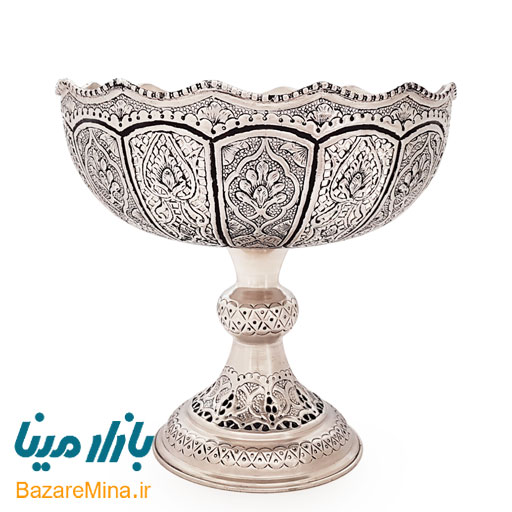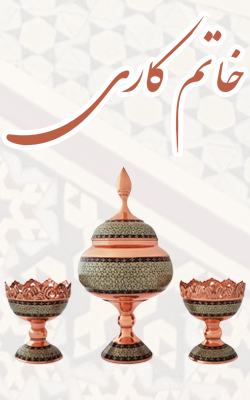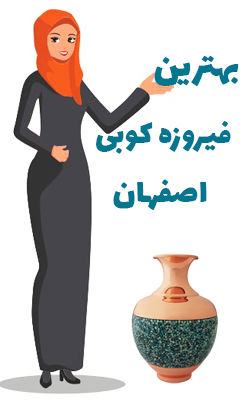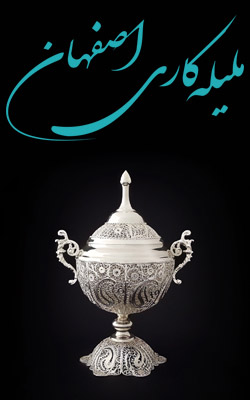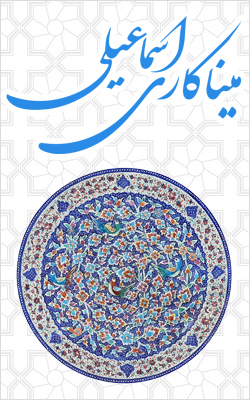- نویسنده: امید حسینی
Enameling Art
Esfahan is known everywhere as “Half of the World”, and is among the few cities whose historical and cultural buildings invite on to a pleasant journey along history No outstanding works remain today to be used as a refer ence on the pre-Islamic Esfahan, but the word Esfahan or sefahan.
which is the Arabic form of the word Sefahan- derived from Sepäh [army] plus the suffix- an-showing that, in the past Esfahan was a place for soldiers. This city has undergone many historical ups and downs. In the Arsacide (Ashkani) period, it used to be the capital of a vast state; in the Sassanid period it was dominated by the Espuhars who were one of the seven Iranian greater families who lived in this city; at a time, Yazdgerd Ill sought refuge in it, after defeat by the Arabs; and, finally, in 23 A.H.,after a severe battle, Esfahan was conquered by the Arabs and was under their rule until the beginning of the 4th century in the reign of Mansur the Abbasid Caliph who made great at- tempts to develop the city; then in 319 A.H., the Ziarid Mordavij took back Esfahan from Arabs and chose it as the capital of his kingdom and magnificently celebrated the Sadeh festival. In 327 H.L., Esfahan was conquered by Roknoddoleh Deylami and become, once again, the capital city for another Iranian com- mander and King, which helped Esfahan regain its splendor In the reign of the Seljuk Malekshah, Esfahan was one more selected as the capital city and yet another golden era began With the asvent of the Mongols, however, in 639 A.H.L.,

خرید صنایع دستی
the city was assailed and entirely ruined, but the people of this land reconstructed it with perseverance and de- ermination. However, a short time later, the blood thirsty army of Tamerlane slaughtered the people of this land were alive and rebuilt the sity again But the flourishing era of Esfahan wad yet to come; this period began when the city was selected as the Safavid capital in the reign of King Abbas I in 1000 A.H.L.. of course, later on, ot the time of Afghans and in the reign of Zellossoltan, son of Nassereddin Esfahan got into danger again, but Esfahan had recovered so well that no storm could easily demolish it. Even the acts of Zellossoltan in cover- ing the omamental walls and selling the lands and building in covering the ornamental walls and sell- ing the lands and building material of the historical ifices with plaster could not make Esfahan de- cline. Esfahan continued living and turned into the half of the world, remained Esfahan, and became the cultural capital of the Islamic world; it remained Esfahan and became the pride of Persia. No, it re- mained not just Esfahan. Esfahan means Iran. Es- fahan means all our cities and villages, and Esfahan means the outspoken history of our land The history is always written by the conquerors But can the self-evident history, namely the works and edifices remaining from our ancestry, be written by the conquerors? And of today, we seek pride and find identity in the works and edifices inherited to us from our an- cestors, and the pieces of art they created.

One of these incomparable and lasting arts is the art of enameling. Some people wrongly believe it to be the art of earth and fire, but this is the art of love and the fire of this art, which reached its heights in the Seljukiar era, and flourished in Safavid era, is still burning, and Esfahan is the only city in which this art is thriving and its enamellists create their unique and everlasting pieces of art The creation of these pieces of art symblilzes the relationship between the created and the creator, felt in the disposition of man- kind. Therefore, one of the amazing secrets of the genesis inher ited inside man, is the artistic and aesthetic attitude. That is why man is always searching for these sense of beauty and seeks to develop creativity. God has endowed all beings with this sense of beauty but each person develops and materializes it.
پیج صنایع دستی ایرانی در شبکه های اجتماعی
بازار مینا BazareMina.ir





